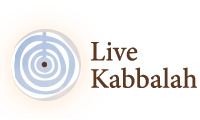Simhat Torah According to Tradition
Simhat Torah is also known as Shemini Atseret and it is the day that comes after the 7 days of Sukkot are over. However, outside Israel these are the names of the two different days of the holiday.
Simhat Torah is being celebrated in order to indicate the yearly completion of the reading of the Torah and the restarting of it. The highlight of the celebrations is the encirclements -Hakafot of the synagogue with all of the Torah scrolls, dancing and singing with them. The Hakafot take place Simhat Torah’s eve and on the following morning before the reading of the Torah.
After the Hakafot, the last portion of the Torah is read – and it is a custom to call all of the people at the synagogue to the Torah, including all the children, and after that, the sixth reading is called Hatan (The Groom of the) Torah and he reads till the end of the Torah. After that the next reading is Hatan Bereshit (Genesis) and that is the first chapter of Genesis, the beginning of the Torah.
In the evening it is costumed to have Second Hakafot, but this time on the streets.
Simhat Torah According to Kabbalah
Eventually, After we created the connection between the vessel and the soul, between the upper and the lower worlds, between the creator and us, during Tishrei holidays, the marriage moment has arrive – Simhat Torah, and as the bride surrounds the groom seven times at the beginning of the wedding ceremony so that is the meaning of the seven Hakafot on Simhat Torah. We are the bride and the creator is the groom.
The source for Simhat Torah’s customs is the Zohar, which told us to take out all the Torah’s and dance with them joyfully. This is actually our last chance to draw light into the new vessel we created during Tishrei holidays.
After the Hakafot we finish reading the Torah on the last portion of Deuteronomy book (Vezot Habrakha) and then restart with Genesis. That is why the Zohar explains we can change our destiny until we finish reading Deuteronomy, since that on the moment we start reading Genesis a new year has started.
The wedding/union comes to its completion on Mussaf prayer, and just before that we pray the Rain Prayer (Tefilat HaGeshem) in order to materialize (Geshem is rain but also physicality) all the blessing we draw since Rosh HaShana until today.
On the prayer of Keter of Mussaf, as we say “Shema Yisrael” the union is completed in all the Sefirot and the worlds and by that the process of preparing our soul for the coming year – the process that started on RoshHaShana – ends.
The Zohar explains that on Shemini Atseret the Light of Simhat Torah – a light of blessing to all creatures and worlds – is available to everyone, and by dancing with the Torah’s we draw light and supreme abundance to our world for and fill all the souls with good fortune and abundance.
